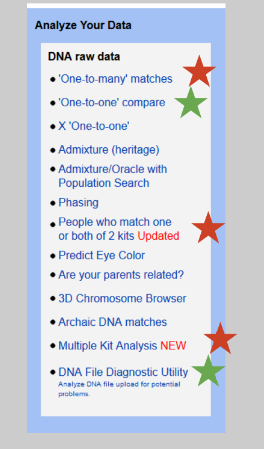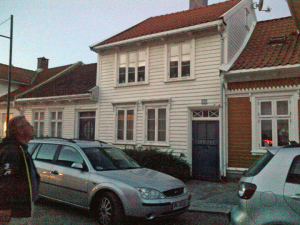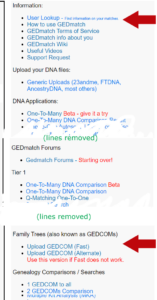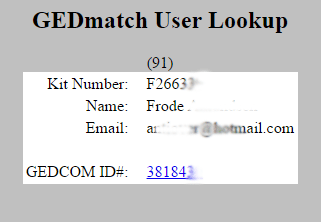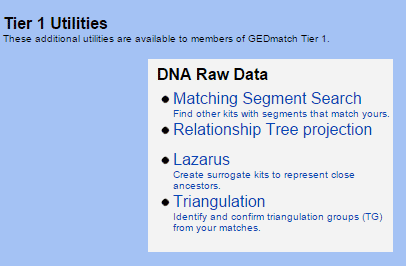Recently I gave an updated talk about GEDmatch.com for my local DNA special interest group, DIG, here in San Diego. GEDmatch.com is a DNA geek’s playground, but many less computer inclined folk find it difficult at first.
It is the only place for those who have tested at Ancestry DNA to compare their results to a possible relative, chromosome by chromosome. It also has many tools that are unique such as ancestry composition calculators with more recent breakdowns and more categories than the main companies. I covered those in detail in my original talk about GEDmatch tools. Those slides are at http://slides.com/kittycooper/gedmatch#/5
The new talk – http://slides.com/kittycooper/gedmatch-10#/ – covered uploading your data, how to manage your kits and mark a kit for research, and much detail on the one-to-many function as well as all my other favorite tools (starred in the image to the left).
There is a new 23andme upload which is nice and fast as it uses the API so you actually log into your account there rather than uploading a file.
It makes sense to upload all your kits when you have tested at more than one company but please mark all but one kit as research only, so DNA relatives are not confused by seeing so many versions of the same person.
